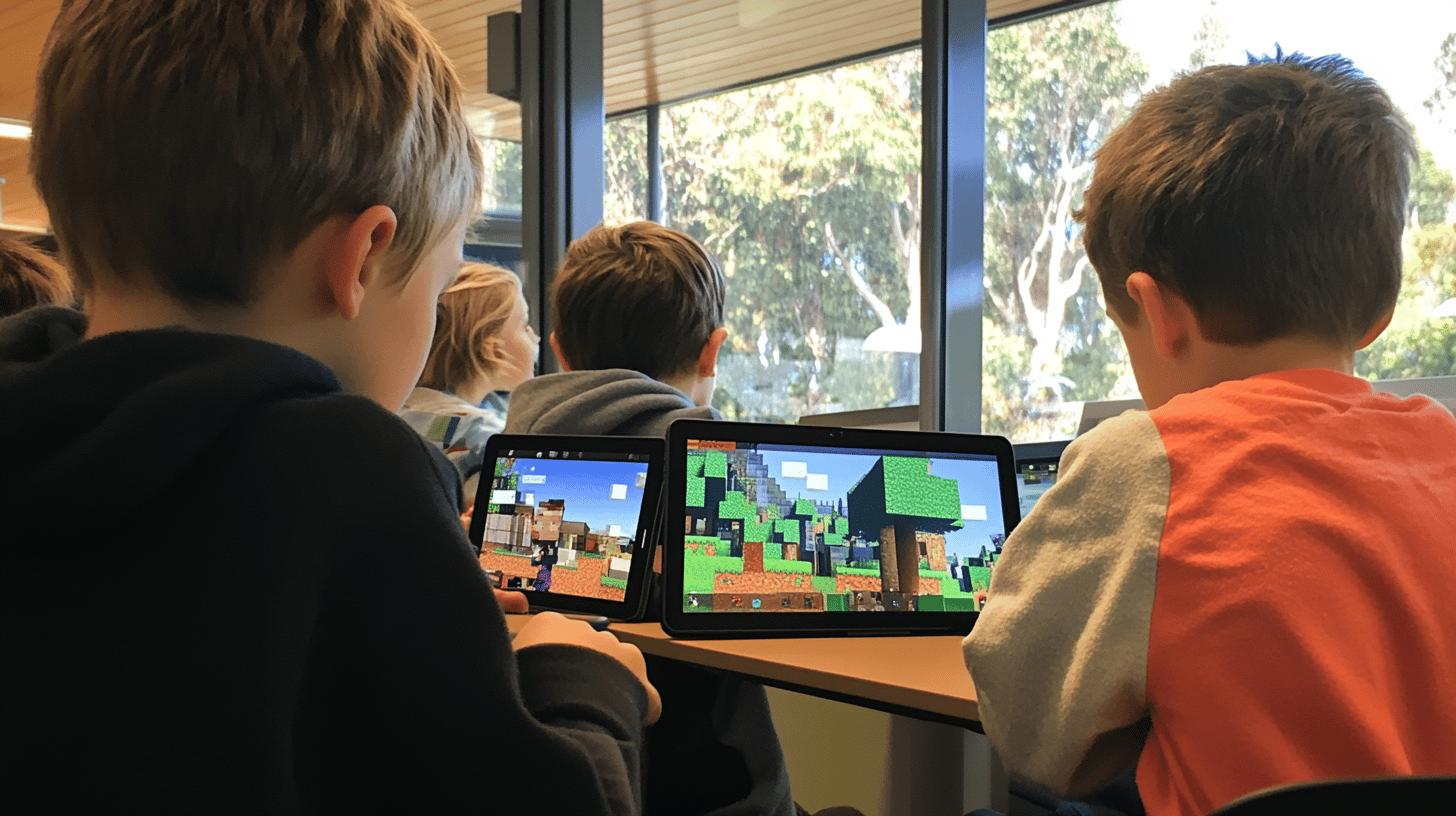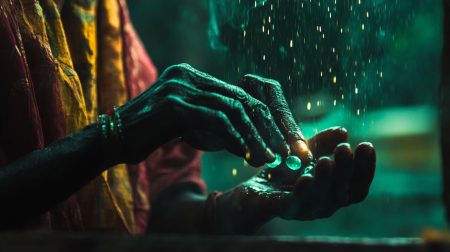Today’s classrooms are not simply spaces filled with desks and blackboards. They’re vibrant learning hubs brimming with digital innovation. Enter “Minecraft Schools,” where one of the globe’s favourite video games becomes a powerhouse educational tool. Schools are integrating Minecraft into lessons, sparking a revolutionary way of teaching.
Programs like Westbourne Grammar School lead the charge, using Minecraft to draw in students with interactive and engaging digital learning. But why Minecraft? Well, it’s not just about blocks and buildings. This dynamic platform encourages the development of essential skills like teamwork, strategic thinking, creative problem-solving, and adaptability.
By catering to diverse interests, Minecraft’s integration is shifting how we perceive education, making lessons informative and exciting. Whether you’re a teacher searching for fresh approaches or a parent curious about developing your child’s skills, this transformation within schools is paving the way for a brighter, block-filled future.
Are you curious about how to implement such an innovative tool in your educational setting? Keep reading to uncover the endless possibilities of bringing the world of Minecraft into the classroom.
Integrating Minecraft in Schools: A Teaching Revolution
Why are schools keen on using Minecraft as a teaching tool? The answer is straightforward: Minecraft captivates students’ attention like other platforms. With its immersive environment, it taps into digital learning by making lessons interactive and fun.
Westbourne Grammar School is a prime example. It incorporates Minecraft to engage students, making it a cornerstone of its digital education strategy. They aim to foster skills that aren’t just academic but crucial for real-world success. This approach reflects a broader trend in which educators see Minecraft as a bridge linking traditional teaching with modern technology.
Here’s a quick rundown of the key skills Minecraft helps develop in students:
- Teamwork: Collaborating on projects within the game enhances cooperative skills.
- Strategic Thinking: Planning and executing strategies in the game mirrors real-world decision-making.
- Problem-Solving: Overcoming in-game challenges fosters critical thinking.
- Creativity: Building and designing in Minecraft encourages imaginative expression.
- Adaptability: Navigating the game’s changing dynamics teaches flexibility.
Now, let’s talk about the diverse interests Minecraft caters to. Whether students are budding architects, aspiring engineers, or creative artists, Minecraft’s sandbox nature offers something for everyone. For those into sports, it provides a platform to design and simulate games.
Meanwhile, architecture enthusiasts can create intricate structures, honing their design skills. This versatility ensures that no matter a student’s passion, Minecraft provides an avenue for exploration and learning, making it a revolutionary teaching tool.
Educational Benefits of Minecraft: Enhancing the Curriculum

Why are educators increasingly incorporating Minecraft into school curriculums? Simple: it transforms how students learn by making education engaging and interactive. Minecraft’s open-ended, immersive environment acts as a catalyst for learning, allowing students to explore subjects hands-only.
By integrating this game into lessons, teachers can bridge the gap between traditional teaching methods and digital-age expectations. This shift caters to tech-savvy students and aligns with educational trends that prioritise active learning and student participation.
Minecraft schools excel in fostering creativity and problem-solving skills. For instance, students building historical landmarks in the game must employ creative thinking and architectural skills. They also develop problem-solving abilities by navigating the challenges of resource management and spatial design. Such activities require them to apply theoretical knowledge practically, reinforcing learning in a manner that mere textbook study cannot achieve.
When it comes to student motivation and engagement, Minecraft is a game-changer. It captivates students’ attention, making them more eager to participate in lessons. The game’s collaborative nature promotes social learning, encouraging students to collaborate and share ideas. This boosts engagement and builds essential communication skills, creating a more dynamic and inclusive classroom environment.
Case Studies: Schools Using Minecraft Effectively
The AEL Schools Minecraft Challenge is making waves across Australia, with 56 schools considering this innovative educational trend. Why is this significant? The challenge is part of Critical Hit Entertainment’s broader strategy to engage students in creative learning through esports, specifically utilising Minecraft.
The participating schools have seen a shift in how students perceive learning, transforming what might have been mundane lessons into thrilling educational adventures. This initiative has enhanced student engagement and fostered a sense of healthy competition and collaboration among peers.
Westbourne Grammar School a case study on point!!
Westbourne Grammar School is a leading example of how Minecraft can seamlessly integrate into a school’s curriculum. What specific programs have they implemented? They’ve embraced the digital world by incorporating Minecraft into various subjects, from history to science. Students have built historical replicas and conducted virtual science experiments, turning abstract concepts into tangible experiences.
The outcomes? Student teamwork and problem-solving skills have improved noticeably, as has creative thinking. By embracing Minecraft, Westbourne Grammar has managed to engage students who might otherwise be disinterested in traditional teaching methods.
Looking at the broader trends, more schools are recognising the value of adopting Minecraft into their educational framework. Why is this happening? Minecraft schools cater to many learning styles and interests, making it an ideal tool for engaging a diverse student body.
As schools witness the positive impact on student motivation and learning outcomes, the trend towards incorporating Minecraft is gaining momentum. This movement represents a shift towards more interactive and student-centred learning environments, setting the stage for a revolution in delivering education.
How to Implement Minecraft in Your School

Ready to bring Minecraft into your school? Let’s start with some resources that are already paving the way. The Australian Esports League (AEL) hosts fantastic initiatives like the Minecraft Build Challenge and Capture the Flag series. These programs are designed to entertain and boost students’ creativity, problem-solving, and teamwork. By participating, schools can tap into a structured framework that supports digital learning while keeping students engaged and excited about education.
Now, how do you get started with integrating Minecraft into your classroom? Here’s a simple step-by-step guide that can help teachers leap:
- Step 1: Understanding the Curriculum Needs
Identify how Minecraft can fit into your existing curriculum goals. Is it a tool for teaching history, maths, or digital technologies? Understanding this helps to tailor the integration process to meet educational outcomes. - Step 2: Accessing Resources
Leverage resources like the AEL programs to get a head start. They offer structured challenges that can be incorporated, making aligning Minecraft activities with educational objectives easier. - Step 3: Setting Up the Technical Side
Ensure that the necessary hardware and software are in place. This includes securing licenses for Minecraft Education Edition and setting up a conducive digital environment for students to work in. - Step 4: Training Educators
Provide training sessions for teachers to familiarize themselves with Minecraft’s educational tools. This will empower them to guide students effectively and creatively through their learning journeys.
Step 5: Monitoring and Evaluation
Assess the effectiveness of Minecraft activities in meeting learning objectives regularly. This involves gathering feedback from students and teachers and making necessary adjustments.
Here’s a handy table of resources and their applications to help you along the way:
| Resource | Application |
|————————————|———————————————-|
| Minecraft Education Edition | Provides educational tools and lesson plans |
| AEL Minecraft Build Challenge | Engages students in creativity and teamwork |
| Teacher Training Workshops | Equips educators with necessary skills |
| Online Forums and Communities | Offers support and idea sharing |
| School IT Support | Assists with technical setup and maintenance |
Let’s not ignore the potential challenges you might face. One common hurdle is the initial technical setup, which can be daunting. To tackle this, collaborate with your school’s IT department or seek external support.
Another challenge could be resistance from staff or parents who are wary of games in education. Address this by showcasing the educational benefits and success stories from other schools. By anticipating these hurdles and preparing solutions, you’re setting the stage for a smooth Minecraft integration that can transform classroom learning.
Minecraft Schools Education Edition: A Tool for Digital Learning
What makes the Minecraft Education Edition stand out? It’s packed with unique features specifically designed for classroom use. Unlike the standard version, this edition offers lesson plans and classroom-friendly tools that align with educational outcomes.
Students can interactively engage with subjects like maths, science, and history, making lessons fun and educational. Focusing on collaboration and creativity, it transforms learning into a digital playground where students can build, explore, and problem-solve together.
Here are some key tools available in the Minecraft Education Edition:
- Classroom Mode: This provides teachers with a dashboard to manage the classroom environment within Minecraft, allowing them to monitor student progress and guide lessons effectively.
- Code Builder: This program allows students to learn coding by creating in-game projects using platforms like Scratch and Python.
- Chemistry Resource Pack: This pack allows students to conduct virtual experiments and learn about chemical reactions and elements in a safe, interactive environment.
- Lesson Plans and Activities: A library of pre-made lesson plans and activities that align with various curriculum standards, making it easy for teachers to integrate Minecraft into their teaching.
- Immersive Reader: This reader supports literacy by providing text-to-speech capabilities, helping students with reading difficulties understand instructions and storylines.
How can you access and download Minecraft Education Edition? It’s straightforward. Schools can purchase licenses through the Microsoft Education Store, ensuring they have the right classroom seats. Once set up, the software can be downloaded directly onto school computers or student devices, ready for action. This accessibility makes it easy for educators to incorporate innovative digital resources into their teaching, paving the way for a new era of learning.
Final Words
Integrating Minecraft in schools revolutionises education by transforming classrooms into dynamic learning environments.
Through programs like Westbourne Grammar School’s initiative and the AEL Schools Minecraft Challenge, students enhance valuable problem-solving, creativity, and teamwork skills.
Educators are increasingly drawn to Minecraft’s educational benefits, recognising its power to motivate and engage students.
With the right resources and guidance, any school can successfully embrace this tool for digital learning.
So, as you consider introducing Minecraft into your school, remember it’s not just a game; it’s a powerful educational ally that benefits both students and teachers.
FAQ
Q: Is there a school version of Minecraft?
A: Yes, there is a school version known as Minecraft: Education Edition. It’s tailored with unique features to facilitate digital learning and engage students in educational activities.
Q: Can Minecraft be used in schools?
A: Absolutely! Schools use Minecraft as a teaching tool to develop skills like teamwork, creativity, and problem-solving. It’s a fabulous way to engage students in learning through a digital platform.
Q: How to go to school in Minecraft?
A: To explore virtual education, download Minecraft: Education Edition or join Minecraft servers hosting school-like environments. These setups promote creativity and collaboration among students.
Q: Which schools play Minecraft?
A: Many schools worldwide, including Westbourne Grammar School in Australia, integrate Minecraft into their curriculum to boost digital learning and student engagement.
Q: How can I download Minecraft Education Edition?
A: You can download Minecraft: Education Edition from its official website. It’s available for free trial or purchase with educational licenses, making it accessible for classrooms.
Q: Is there a free version of Minecraft for schools?
A: While Minecraft offers various versions, Minecraft: Education Edition can be accessed through free trials for schools to explore its educational features before formal adoption.
Q: What is Minecraft Classic?
A: Minecraft Classic is a free, browser-based version of the original Minecraft game. It allows players to experience the game’s early creative mode without modern updates.
Q: What are the educational benefits of using Minecraft in schools?
A: Using Minecraft in schools enhances creativity, strategic thinking, problem-solving, and teamwork. Integrating gaming with learning also increases student motivation and engagement.














